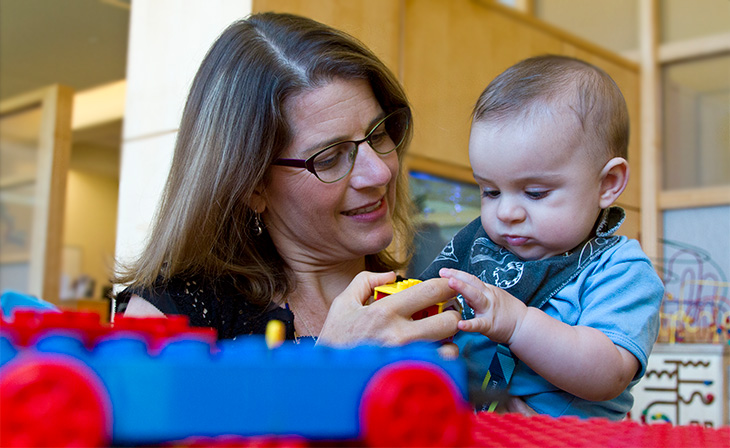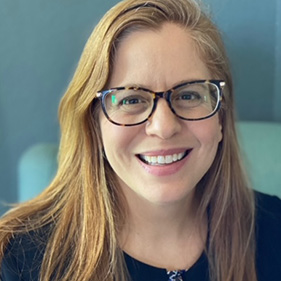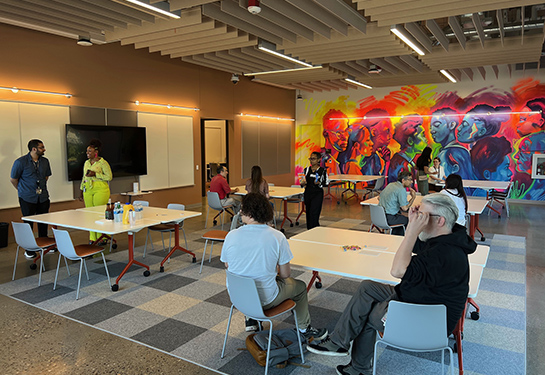Psychiatry researchers get $4.7 million NIMH grant to test autism intervention in community
Researchers in the UC Davis Department of Psychiatry and Behavioral Sciences and the UC Davis MIND Institute have received a $4.7 million, five-year grant from the National Institutes of Mental Health to study a child-focused autism intervention in community agencies. The Early Start Denver Model (ESDM) is a comprehensive intervention for autistic children ages 1-4. It addresses all areas of development and emphasizes communication and social interaction through everyday activities.
ESDM was tested in research studies at the MIND Institute and shown to improve communication skills and daily living skills. The new grant will allow UC Davis experts to train behavior analysts in community agencies to use the model, to see if it is effective on a larger scale.
“This is very exciting,” said Aubyn Stahmer, the principal investigator of the study, a professor in the Department of Psychiatry and Behavioral Sciences and the director of the MIND Institute’s Center for Excellence in Developmental Disabilities. Our goal is to make sure children and families are getting the most up-to-date interventions and this is a key step toward that.”

Why is the Early Start Denver Model different?
Early autism intervention is now covered by many insurance companies. Most community agencies that offer this use a set of structured strategies based on applied behavior analysis (ABA) to help children build skills. In contrast, ESDM starts with the science of human development and integrates ABA strategies in ways that fit with the child’s needs.
ESDM is different than more structured approaches because it makes sure the child is involved in meaningful interactions with caregivers and teaching is driven by the child’s interests. It was co-developed by the MIND Institute’s Sally Rogers, a distinguished professor emeritus in the Department of Psychiatry and Behavioral Sciences who is a co-investigator for the new study.
“There’s something very special about strategies such as ESDM, because they are incorporated into the child’s routine, the things the child is already doing,” said Sarah Dufek, a MIND Institute psychologist in the Department of Psychiatry and Behavioral Sciences and behavior analyst who’s also a study co-investigator. “The intervention is embedded so deeply in everyday activities that often observers will say, ‘They just look like they’re playing.’”
The focus on the child’s interests and environment is called a naturalistic approach.
“For example, instead of sitting down with a child and teaching them to ask for help over and over, I’d look for opportunities in the child’s day where they need help naturally, like opening the refrigerator or putting on their shoes, or putting a marble in a marble tower. Then, I’d use those moments to help coach the child to ask for help,” Dufek explained.
There’s something very special about strategies such as ESDM, because they are incorporated into the child’s routine, the things the child is already doing. The intervention is embedded so deeply in everyday activities that often observers will say, ‘They just look like they’re playing.’”—Sarah Dufek, psychologist and behavior analyst, UC Davis MIND Institute
Study to include 300 children receiving therapy in community agencies
For the study, the researchers will be partnering with at least two agencies, Kyo and LEARN Behavioral, which provide applied behavior analysis. UC Davis experts will train behavior analysts in the ESDM approach, and the analysts will train the behavior technicians who provide the therapy.
“This partnership will help us disseminate best practices amongst clinicians in our field, improve outcomes for kids and enhance caregiver support and training,” said Jocelyn Thompson, a clinical social worker and behavior analyst who is vice president of autism services at LEARN Behavioral. “We hope it leads to the best care possible for those with autism and their families.”
The researchers will also create “micro-learnings,” or short videos that therapists can pull up on their cellphones as needed.
“Let’s say a technician is going to see a 2-year-old and work on language that day. We’ll have these videos ready so the technicians can pull it up on their phone beforehand to see examples of how they could do that,” Stahmer said. “We want to see if we can teach people to deliver ESDM to get outcomes like we’ve had in research studies with our highly trained staff.”
“Taking the ESDM approach into the community and having it implemented by agency staff will help to increase access to quality intervention,” said Melissa Willa, chief clinical officer and co-founder of Kyo.
The UC Davis team will do a three-month initial training and hold monthly meetings with agency supervisors. They’ll record one session per month for each of the 300 children who’ll be part of the study and follow them for six months. Researchers will also ensure the ESDM approach is being followed. They expect the training to begin in January. It will be offered in Spanish and English.
“We want to ensure that children are getting the best quality support and services we can provide and that work for all families, with as little disparity as possible,” Dufek said.
The NIMH grant number is R01MH131703.





